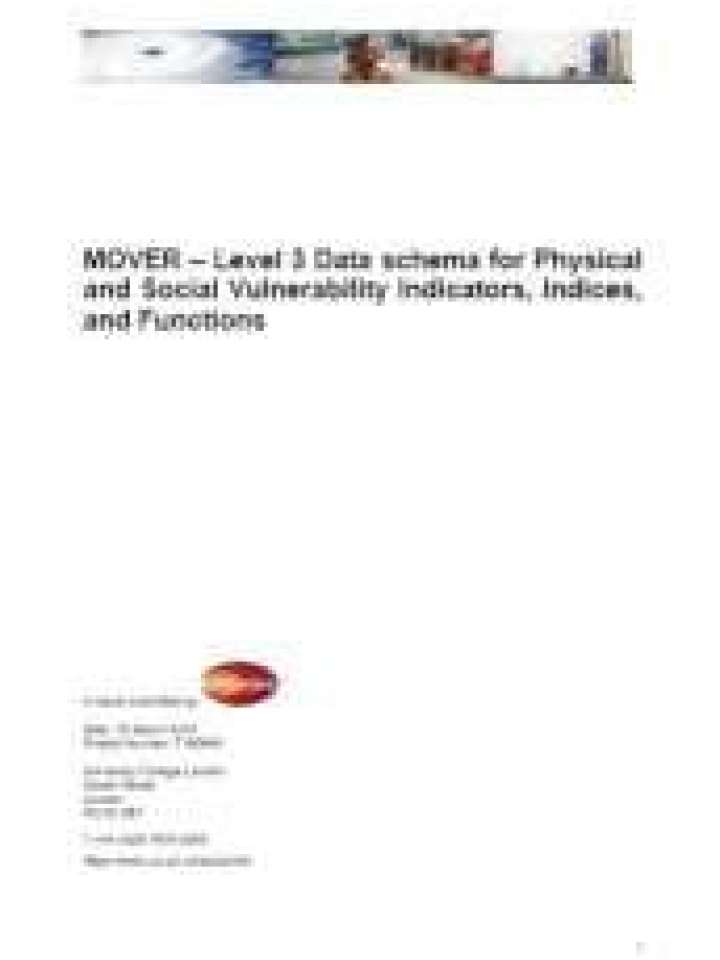MOVER: Level 3 data schema for physical and social vulnerability indicators, indices, and functions
This report is the fourth (and last) of a series of reports produced for the fulfilment of the deliverables of the MOVER (Multi-Hazard Open Vulnerability Platform for Evaluating Risk) project. It follows the “MOVER Inception Report”, the “GFDRR-DFID Challenge Fund Expert Workshop -Feedback Report” and “MOVER – Level 2 Data schemas for Physical and Social Vulnerability Indicators, Indices, and Functions Report”.
The inception report outlined a reverse pyramid approach for the development of the MOVER vulnerability data schema. This involved developing a series of data schema versions, starting from a wide data schema (Level 1) that does not take into account issues of data availability, a more refined version (Level 2) of the data schema that is applicable to developed country contexts, and finally a reduced data schema (Level 3) that is more applicable to the case of developing countries. The main aim of this report is to provide a detailed description of the final Level 2 and Level 3 data schemas.
To aid the reader in the comprehension of this report, a brief introduction on the scope of the overall Challenge 3 MOVER project is provided. This is followed by a description of the revision of the Level 2 data schema and development of the Level 3 data schema. The structure of both Level 2 and Level 3 data schemas is modular and comprises four main modules for the multi-hazard and multi-asset assessment of physical and social vulnerability: the physical vulnerability indicators module, the social vulnerability indicators module, the vulnerability, fragility and damage to loss functions module and the physical, social and hybrid vulnerability indices module. These modules call upon several shared supporting tables that list the hazards, assets, intensity measures, loss parameters, damage scales, engineering demand parameters, references and data sources. The presented Level 3 data schema has been coded in PostgreSQL and has been provided with a fully-fledged administration interface. The user is guided in the compilation of the data schema by the advanced customisation of each of the data fields which, with aliases and pre-populated drop-down menus, ensures a seamless data entry experience. Explanations of the terms adopted in the pre-populated menus are provided in the Level 3 data schema description as well as in Annexes III – VI of the report. The data schema is compatible with data types from Challenges 1 and 2 and can accommodate data at different geographical scales. The modular structure of the data schema facilitates its future extension.
The data schema is populated with vulnerability data and models for Tanzania and 5 other countries. The developed fragility and vulnerability function scoring system is used to assess the suitability of existing functions for adoption in case study scenarios in these countries. An example of how to enter data into the coded data schema is provided in Annex VII.
Explore further
